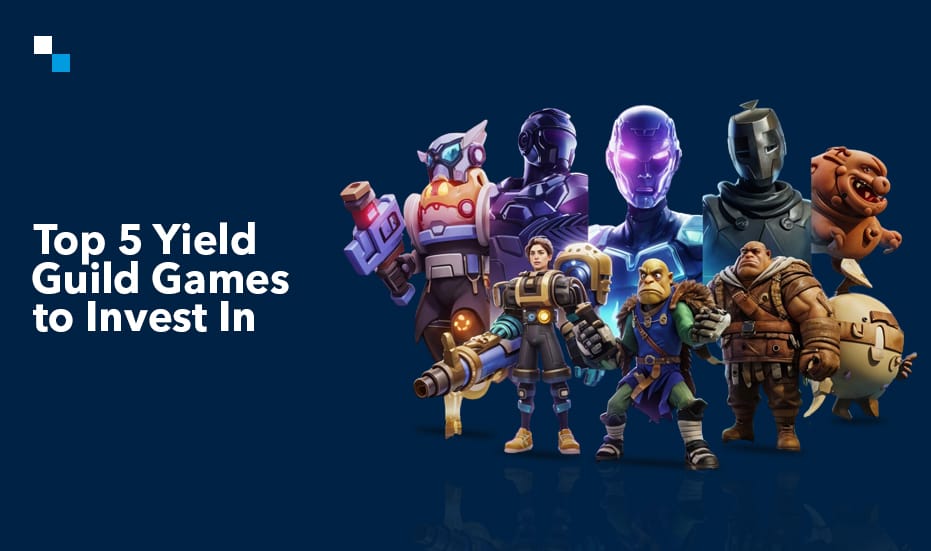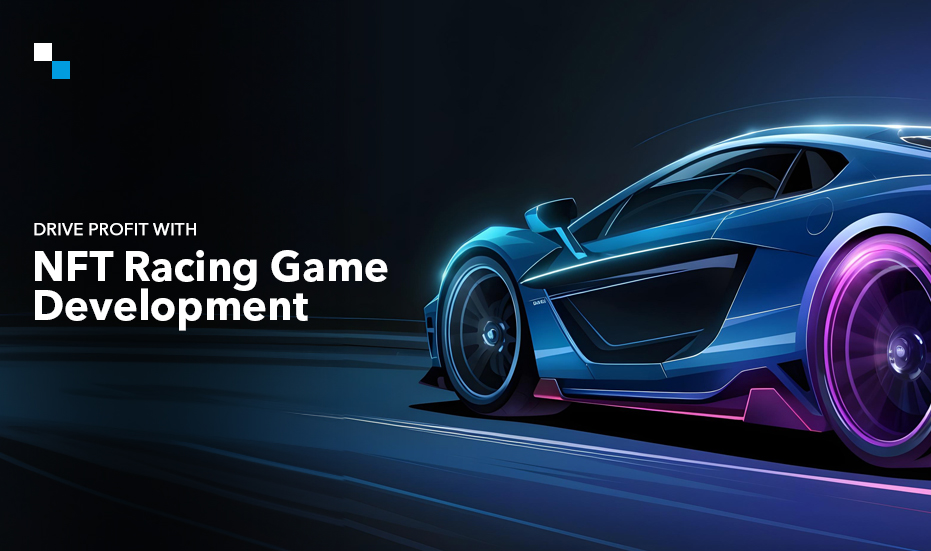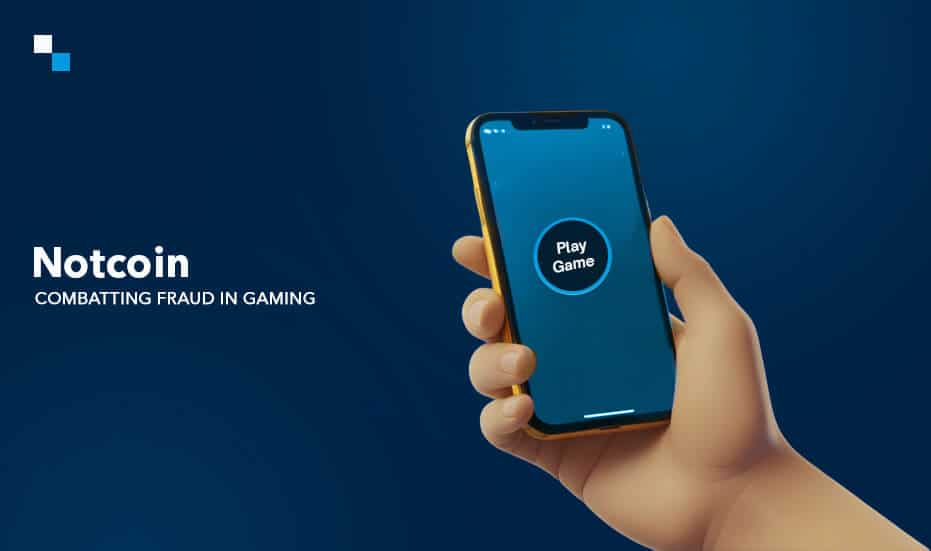
How Much Does It Cost To Create an NFT Collection?
June 16, 2023
Tokenized Real-World Assets (RWAs): Expanding DeFi’s Reach on a Global Scale
June 19, 2023What if I say you can now migrate your Ethereum ERC-721-based nonfungible tokens (NFTs) to the Bitcoin blockchain? Yes, this is now possible with the launch of the latest token standard and layer two solution- BRC-721E token. This will allow the conversion of immutable, verifiable ERC-721 NFTs to Ordinals.
Ordinals are referred to as satoshis which is simply the smallest unit of BTC (i.e. 1 Satoshi= 0.0000001 BTC).
However, before we delve deeper into this, let’s understand what is the ERC-721 token standard, the emergence of BRC-721E along with the need for Bitcoin ordinals!
What is the ERC-721 Token Standard?
ERC-721 is a non-fungible token (NFT) standard on the Ethereum blockchain that was created in 2018. It defines a set of rules for creating and managing NFTs, such as how they are minted, transferred, and tracked. ERC-721 tokens are unique and cannot be replaced by another token of the same type. This makes them ideal for representing digital assets such as collectibles, art, and in-game items.
ERC-721 is a more complex standard than the ERC-20 standard for fungible tokens, such as ETH. This is because NFTs need to be able to track ownership and uniqueness. ERC-721 tokens are also more expensive to mint and transfer than ERC-20 tokens.
Despite the higher costs, ERC-721 has become the de facto standard for NFTs. This is because it offers a number of advantages over other standards, such as:
- Security: ERC-721 tokens are stored on the Ethereum blockchain, which is a secure and decentralized network.
- Scalability: The Ethereum blockchain is scalable, which means that it can support a large number of NFTs.
- Interoperability: ERC-721 tokens can be used on a variety of platforms and applications.
As the NFT market continues to grow, ERC-721 is likely to become even more popular. It is the standard that most NFT projects use, and it offers a number of advantages over other standards.
Here are some examples of ERC-721 tokens:
- CryptoKitties: CryptoKitties are digital cats that can be bought, sold, and traded on the Ethereum blockchain.
- NBA Top Shot: NBA Top Shot is a platform that allows users to buy, sell, and trade digital trading cards of NBA moments.
- Decentraland: Decentraland is a virtual world that uses ERC-721 tokens to represent land parcels.
These are just a few examples of the many ERC-721 tokens that are available. As the NFT market continues to grow, we can expect to see even more ERC-721 tokens being created.
What are Bitcoin Ordinals?
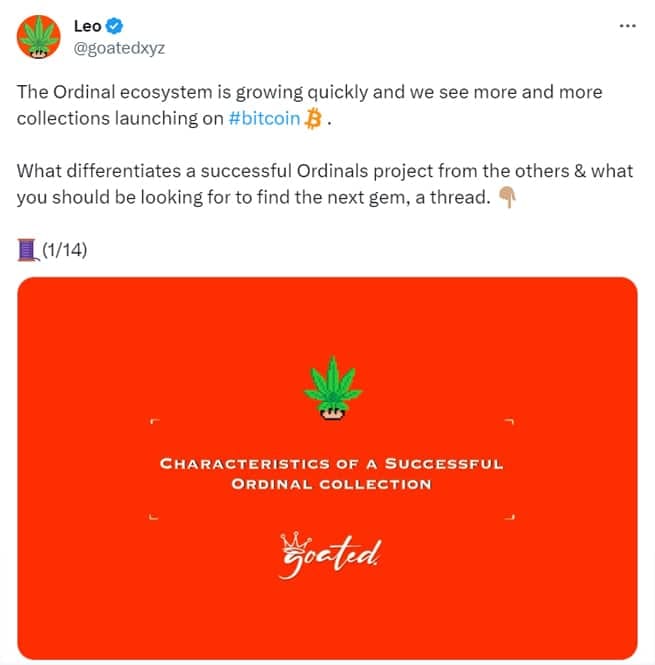
Bitcoin Ordinals is a new layer-2 concept enabling individuals to store digital art on the Bitcoin blockchain. They allow users to attach arbitrary data to individual satoshis, the smallest unit of Bitcoin currency. This data can be anything, such as images, videos, or text.

The platform has recently launched the BRC-721E token standard, which enables the migration of Ethereum NFTs to Bitcoin Ordinals. We’ll understand the details about the BRC-721E token standard below.
The BRC-721E standard is a token standard that is compatible with both the Ethereum and Bitcoin blockchains where users can mint BRC-721E tokens on Ethereum and then bridge them to Bitcoin Ordinals. Once the tokens have been bridged, they will be stored on the Bitcoin blockchain and will be accessible to Bitcoin Ordinals users.
What is BRC-721E Token & Why is it Needed?

BRC-721E is a token standard that allows users to transfer their Ethereum NFTs to the Bitcoin blockchain. It was created by Ordinals Market and Bitcoin Miladys NFT Collection. The BRC-721E token standard is a significant development for the NFT space. It allows users to access the security and reliability of the Bitcoin blockchain while also enjoying the benefits of the Ethereum NFT ecosystem.
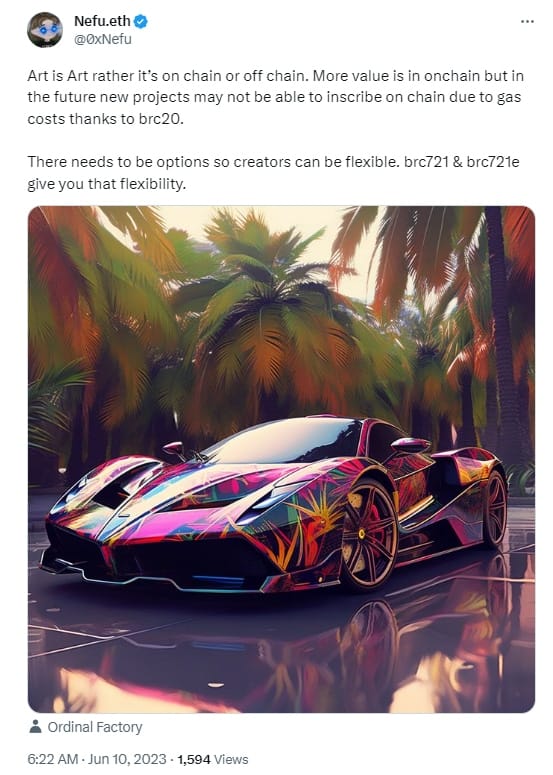
The BRC-721E protocol is a significant development for the NFT space. It allows users to access the security and reliability of the Bitcoin blockchain while also enjoying the benefits of the Ethereum NFT ecosystem.
How BRC-721E Token Standard Work?
The BRC-721E standard works by using a process called “burning.” When a user mints a BRC-721E token on Ethereum, the token is burned on the Ethereum blockchain. The burning process is irreversible and ensures that the token cannot be double-spent.
Once the token has been burned, it is then minted on the Bitcoin blockchain. The minting process is done by using a Bitcoin Ordinals node. The node will create a new Bitcoin Ordinals address for the user and then mint the BRC-721E token on that address.
The BRC-721E token will be stored on the Bitcoin blockchain and will be accessible to Bitcoin Ordinals users. Users will be able to view, transfer, and sell their BRC-721E tokens on the Bitcoin Ordinals marketplace.

Here are some of the highlights of the BRC-721E protocol:
- It allows users to access the security and reliability of the Bitcoin blockchain while also enjoying the benefits of the Ethereum NFT ecosystem.
- It is a decentralized standard, meaning that it is not controlled by any one entity.
- It is compatible with both the Ethereum and Bitcoin blockchains.
- It is easy to use and can be integrated with existing NFT wallets and marketplaces.
BRC-721E token standard is a significant development for the NFT space and is likely to have a major impact on the NFT market.
Some additional details about the BRC-721E protocol:
- It is based on the ERC-721 standard, which is the most popular NFT standard on the Ethereum blockchain.
- It uses a process called “burning” to transfer NFTs from the Ethereum blockchain to the Bitcoin blockchain. When an NFT is burned, it is permanently removed from the Ethereum blockchain and is minted on the Bitcoin blockchain.
- BRC-721E tokens are stored on the Bitcoin blockchain and are accessible to Bitcoin Ordinals users. Users will be able to view, transfer, and sell their BRC-721E tokens on the Bitcoin Ordinals marketplace.
Benefits of the BRC-721E Standard
The BRC-721E protocol offers a number of benefits for users. These benefits include:
- Security: The Bitcoin blockchain is one of the most secure blockchains in the world. This means that BRC-721E tokens are stored on a secure network.
- Reliability: The Bitcoin blockchain is a very reliable network. This means that BRC-721E tokens are unlikely to be lost or stolen.
- Scalability: The Bitcoin blockchain is a very scalable network. This means that BRC-721E tokens can be used to represent a wide variety of digital assets.
- Accessibility: The Bitcoin blockchain is a very accessible network. This means that BRC-721E tokens can be used by a wide range of users.
Potential Use Cases of Bitcoin Ordinals
- Collectibles
Bitcoin Ordinals can be used to create unique and collectible digital assets. This could include things like digital trading cards, art, or even music. - Gaming
Bitcoin Ordinals can be used to create in-game items that are unique and cannot be duplicated. This could add a new layer of excitement and value to gaming experiences. - Finance
Bitcoin Ordinals can be used to create unique and secure financial instruments. This could include things like fractional ownership of assets or even insurance policies. - Supply chain management: Bitcoin Ordinals can be used to track the movement of goods and materials through a supply chain. This could help to ensure the authenticity and provenance of products.
- Voting
Bitcoin Ordinals can be used to create a secure and transparent voting system. This could help to increase voter participation and reduce fraud.
These are just a few of the potential use cases for Bitcoin Ordinals. As the technology continues to develop, we can expect to see even more innovative and exciting applications for Bitcoin Ordinals.
What the Future Holds
As Bitcoin ordinals continue to develop, we can expect to see them used in even more innovative and exciting ways. They have the potential to revolutionize the way we use Bitcoin and the way we interact with the world around us.
Overall, the future of Bitcoin ordinals is promising. If this technology can be adopted by a wide range of users and developers, this will simply transform the way we store data, create digital assets, and develop financial applications.
Become an early adopter of the BRC-721E token standard and leverage it into your business now. Antier can be your digital partner in this journey. Book a free consultation now.

